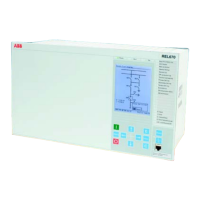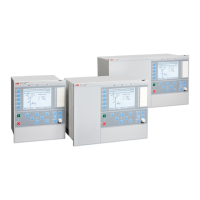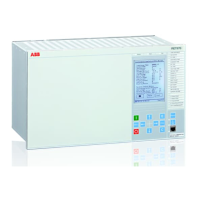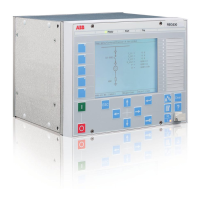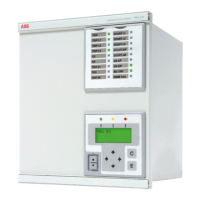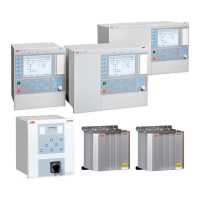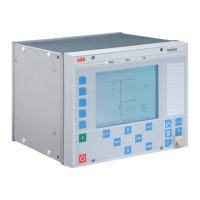As soon as any fuse failure situation is detected, signals FuseFailDetZeroSeq,
FuseFailDetNegSeq or FuseFailDetDUDI, and the specific functionality is
released, the function will activate the output signal BLKU. The output signal
BLKZ will be activated as well if the internal dead phase detection,
DeadLineDet1Ph, is not activated at the same time. The output BLKU can be used
for blocking voltage related measuring functions (under voltage protection,
energizing check, and so on). The output BLKZ shall be used to block the
impedance protection functions.
If the fuse failure situation is present for more than 5 seconds and the setting
parameter SealIn is set to On it will be sealed in as long as at least one phase
voltages is below the set value USealIn<. This will keep the BLKU and BLKZ
signals activated as long as any phase voltage is below the set value USealIn<. If
all three phase voltages drop below the set value USealIn< and the setting
parameter SealIn is set to On the output signal 3PH will also be activated. The
signals 3PH, BLKU and BLKZ will now be active as long as any phase voltage is
below the set value USealIn<.
If SealIn is set to On the fuse failure condition lasting more then 5 seconds is stored
in the non-volatile memory in the IED. At start-up of the IED (due to auxiliary
power interruption or re-start due to configuration change) it uses the stored value
in its non-volatile memory and re-establishes the conditions that were present
before the shut down. All phase voltages must be restored above USealIn< before
fuse failure is de-activated and resets the signals BLKU, BLKZ and 3PH.
The output signal BLKU will also be active if all phase voltages have been above
the setting USealIn< for more than 60 seconds, the zero or negative sequence
voltage has been above the set value 3U0> and 3U2> for more than 5 seconds, all
phase currents are below the setting IDLD< (criteria for open phase detection) and
the circuit breaker is closed (input CBCLOSED is activated).
If a MCB is used then the input signal MCBOP is to be connected via a binary
input to the N.C. auxiliary contact of the miniature circuit breaker protecting the
VT secondary circuit. The MCBOP signal sets the output signals BLKU and BLKZ
in order to block all the voltage related functions when the MCB is open
independent of the setting of OpMode or OpDUDI. An additional drop-out timer of
150 ms prolongs the presence of MCBOP signal to prevent the unwanted operation
of voltage dependent function due to non simultaneous closing of the main contacts
of the miniature circuit breaker.
The input signal DISCPOS is supposed to be connected via a terminal binary input
to the N.C. auxiliary contact of the line disconnector. The DISCPOS signal sets the
output signal BLKU in order to block the voltage related functions when the line
disconnector is open. The impedance protection function does not have to be
affected since there will be no line currents that can cause malfunction of the
distance protection.
1MRK 506 382-UEN A Section 10
Secondary system supervision
Line distance protection REL650 2.2 IEC 329
Technical manual

